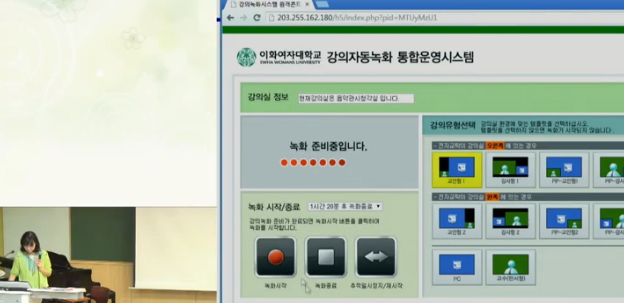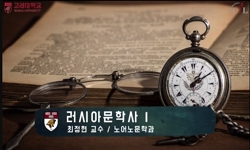In this study, I tried to figure out the transition process of Hangeul calligraphic styles from the Hangeul creation in the 15th century to the beginning of the 20th century and to organize various Hangeul calligraphic styles that appeared in the proc...
http://chineseinput.net/에서 pinyin(병음)방식으로 중국어를 변환할 수 있습니다.
변환된 중국어를 복사하여 사용하시면 됩니다.
- 中文 을 입력하시려면 zhongwen을 입력하시고 space를누르시면됩니다.
- 北京 을 입력하시려면 beijing을 입력하시고 space를 누르시면 됩니다.

조선시대 17세기 한글 간본문헌의 서체특징과 서예사적 고찰 = The Characteristics of Calligraphic Style and Significance of Calligraphy History of Published Hangeul Document in the 17th Century of Joseon Dynasty
한글로보기부가정보
다국어 초록 (Multilingual Abstract)
In this study, I tried to figure out the transition process of Hangeul calligraphic styles from the Hangeul creation in the 15th century to the beginning of the 20th century and to organize various Hangeul calligraphic styles that appeared in the process. Thus, the purpose of this study is to elucidate the characteristics of the calligraphic style and significance of calligraphy history of the published Hangeul document in the 17th century.
The research data of this study was limited to 40 kinds of published Hangeul documents whose literary value was objectively proven among the Hangeul documents published by central government offices (Gyoseogwan, Gangyeongdogam), local government offices, and Buddhist temples in the 17th century. These documents are mainly related to custom reformation, education, medical care, and doctrine. Depending on the contents of the document and the economic situation of the publisher, the format and the letter sizes were changed. The way lines and letters are arranged also influenced in determining the shape of letters.
In terms of calligraphic styles, there was a remarkable difference between the central government office editions and the local government office editions. The central government office editions had maintained the refined calligraphic styles in Hangeul documents of the 15th century until the early 17th century. By the way, the local government office editions had changed their calligraphic styles since the end of the 16th century. Its significant features are as below: First, the shape of letters in Hunminjeongeum Haerye, which was firmly maintained until the end of the 15th century, began to show signs of change in some documents from the 16th century, and the direction and thickness of strokes changed in the 17th century.
Second, there was a change in the beginning part of ‘ieung(ㅇ)’. In some cases, ‘ieung(ㅇ)’ has a tap like ‘old ieung(ㆁ)’ in the final consonant, so ‘ieung(ㅇ)’ and ‘old ieung(ㆁ)’ with a tap are mixed.
Third, since 『Yeonbyeongjinam』, ‘jieut(ㅈ)’ was not written with three strokes but changed to two strokes, and ‘tieut(ㅌ)’ was written with ‘eu(ㅡ)’ and ‘digeut(ㄷ)’, which is different from the shape of letters in Hunminjeongeum.
Fourth, in terms of the contents of the documents, the calligraphic styles of Confucian scriptures, medical books, and educational documents did not change much, but those of locally published Buddhist documents and military documents showed their individuality and originality.
These characteristics of the calligraphic styles of published Hangeul documents in the 17th century would have acted as a driving force that greatly influenced the appearance of various Hangeul calligraphic styles. From the point of view of calligraphy history, this period would be the starting point for Hangeul to become an object of individual and creative artistic expression beyond the uniform and simple letter shape.
In this study, since I only used the published documents as research data, it was difficult to examine the wide range of calligraphic style changes and its artistry in the manuscripts of this period. Thus, it is necessary to link various academic fields such as bibliography, Korean linguistics, Buddhist philosophy, and medicine and explore the calligraphy historical value of manuscripts of this period.
국문 초록 (Abstract)
이 논문은 15세기에 한글이 창제된 이후 20세기 초까지 약 5세기 동안 한글 서체의 변천과정을 밝히고 그 과정에 나타난 다양한 한글 서체를 정리하고자 하는 작업의 일환으로 17세기 한글 간...
이 논문은 15세기에 한글이 창제된 이후 20세기 초까지 약 5세기 동안 한글 서체의 변천과정을 밝히고 그 과정에 나타난 다양한 한글 서체를 정리하고자 하는 작업의 일환으로 17세기 한글 간본문헌 서체의 특징과 서예사적 의의 및 그 이월적(移越的) 가치를 천명(闡明)하기 위하여 집필된 것이다.
본고의 텍스트는 17세기 중앙관서(교서관, 간경도감)과 지방관아, 불교사찰 등에서 간행한 한글 문헌 가운데 그 문헌적 가치가 객관적으로 입증된 40여종의 한글 간본문헌으로 한정하였다. 이 문헌들은 주로 풍속교화, 교육, 의료, 교리 등과 관련된 내용의 문헌인데 수록내용과 간행기관의 경제적 상황에 따라 판형, 글자의 크기 등이 각각 달랐고, 배행 배자방식 등도 자형 결정에 일정한 영향을 준 것으로 밝혀졌다.
서체의 측면에서 볼 때 중앙간본의 한글 서체와 지방간본의 한글 서체는 괄목할만한 차이가 있음이 밝혀졌다. 중앙간본이 17세기 초반까지 15세기 한글 간본문헌의 정제된 서체를 견지한 데 비해, 17세기의 지방 간본문헌들에 실린 한글 서체는 동시대 중앙 간본문헌의 그것과는 다른 변화된 한글 서체를 보여주고 있는데 그 중요한 특징은 다음과 같다.
첫째, 16세기까지 굳건히 지켜지던 해례본류의 자형은 17세기에 이르면 자형의 방향과 굵기가 확연히 달라지며, 중앙간본보다는 지방간본의 변모가 더 크다. 둘째, ‘ㅇ’의 기필부분이나 종성에서 ‘ㆁ(옛이응)’처럼 꼭지가 보이는 등 ‘ㅇ’과 꼭지 ㆁ(옛이응)이 혼재되어 나타난다. 셋째,『연병지남』에서부터 ‘ㅈ’은 3획에서 2획으로 변모하기 시작하였고, ‘ㅌ’은 ‘ㅡ’와 ‘ㄷ’이 떨어지기 시작하는 등 훈민정음 당시의 자형과는 뚜렷한 차이를 보이고 있다. 넷째, 문헌의 내용에서 볼 때, 경서류, 의서류, 교육류 문헌의 서체는 서체변화가 그리 크지 않으나, 지방에서 간행된 불서류, 병서류 등은 개성과 독창성이 드러난다고 볼 수 있다.
17세기 한글 간본문헌 서체에 드러나는 이러한 특성은 이후 전개되는 다양한 한글 서체의 등장에 큰 영향을 준 동인(動因)으로 작용하였을 것이다. 서예사적으로 볼 때 이 시기는 한글이 획일적이고 단순한 자형에서 벗어나 개성적이고 창조적인 예술적 표현의 대상이 되어가는 필사본에 비해 간본문헌은 지방간본에서 더 다양한 형태의 변모를 감지할 수 있었으며, 중앙간본은 변화의 폭이 미미하였다.
본고에서는 간본문헌만을 연구자료로 활용하였기 때문에 이 시기 필사자료에 드러나는 폭넓은 서체의 변화양상과 그 예술성에 대하여 깊이 검토하지 못하였다. 서지학, 국어학, 불교철학, 의학 등 다양한 학문 분야의 연계는 물론 이 시기 필사문헌의 서예사적 가치를 탐색하는 작업은 반드시 필요한 것으로 판단된다.
참고문헌 (Reference)
1 김진평, "활자체 변천의 사적연구, 한글 글자꼴 기초연구" 한국출판연구소 1990
2 김두식, "한글자형 변천에 관한 연구" 단국대학교 2003
3 박병천, "한글서체학연구" 133-171, 2014
4 고은숙, "한글박물관 소장자료총서2" 12-, 2015
5 백두현, "한글문헌학" 태학사 2015
6 홍윤표, "한글 자형의 변천사 총설, 한글글꼴의 역사와 미래" 1998
7 유정숙, "한글 옛 글자꼴의 변천 및 조형성 고찰 -15-18세기 년대별 대표 한 문헌만을 중심으로-" 한국어학회 41 : 35-60, 2008
8 장지훈, "한글 서예의 미학 - 서체미를 중심으로" 한국서예학회 (34) : 145-173, 2019
9 "한국학중앙연구원"
10 김남형, "한국서예사" 미진사 2017
1 김진평, "활자체 변천의 사적연구, 한글 글자꼴 기초연구" 한국출판연구소 1990
2 김두식, "한글자형 변천에 관한 연구" 단국대학교 2003
3 박병천, "한글서체학연구" 133-171, 2014
4 고은숙, "한글박물관 소장자료총서2" 12-, 2015
5 백두현, "한글문헌학" 태학사 2015
6 홍윤표, "한글 자형의 변천사 총설, 한글글꼴의 역사와 미래" 1998
7 유정숙, "한글 옛 글자꼴의 변천 및 조형성 고찰 -15-18세기 년대별 대표 한 문헌만을 중심으로-" 한국어학회 41 : 35-60, 2008
8 장지훈, "한글 서예의 미학 - 서체미를 중심으로" 한국서예학회 (34) : 145-173, 2019
9 "한국학중앙연구원"
10 김남형, "한국서예사" 미진사 2017
11 김기승, "한국서예사" 정음사 1975
12 "한국민족문화대백과사전"
13 천혜봉, "한국목활자본" 범우사 1966
14 천혜봉, "한국금속활자본" 범우사 1966
15 "한국고전적종합목록시스템"
16 박병천, "한국 역대 명필가의 고문헌 자본 필사의 역할과 서체개발" 한국서예학회 (3) : 2002
17 박병천, "조선초기 한글판본체연구" 일지사 2000
18 "조선왕조실록"
19 박정숙, "조선시대 한글고문헌 귀중본 서체의 변천사적 조형미 고찰" 한국서예학회 (28) : 81-113, 2016
20 김명준, "조선시대 글꼴의 변화양상(1)" 한림대학교 인문학연구소 18 : 2013
21 정재영, "정조대의 한글문헌" 문헌과 해석사 2000
22 김목한, "장서각한글자료해제" 한국정신문화연구원 2000
23 "장서각, 규장각, 디지털한글박물관, 국립중앙도서관, 국립한글박물관, 세종대왕기념사업회박물관"
24 윤형두, "옛책의 한글판본ⅠⅡ" 범우사 2003
25 박병천, "옛문헌 한글글꼴 발굴-복원연구" 세종대왕기념사업회 2003
26 홍윤표, "신간구황촬요해제(新刊救荒撮要解題)" 태학사 1986
27 "문화재청 국가문화유산포털"
28 "네이버 지식백과"
29 홍윤표, "규장각 소장 근대국어 문헌자료의 종합적 연구" 규장각한국학연구원 (15) : 1-55, 1994
30 홍윤표, "국어사자료강독" 태학사 2016
31 홍윤표, "국어사자료강독" 태학사 2016
32 정규복, "국가왕실문헌과 민간 사대부의 문헌, 강의자료집" 한중연 2011
33 "고전벅역원DB"
34 정복동, "고소설 <왕랑반혼전>판본 字形의 조형미와 한글서예사적 의의 고찰"
35 李忠九, "經書 諺解 연구" 成均館大學校 大學院 1990
36 두피디아, "Doopedia, 두산세계대백과사전"
37 박정숙, "18세기 조선의 명저 병학지남(兵學指南) 언해본류의 다종서체(多種書體) 형성과 확산에 관한 연구" 한국서예학회 (30) : 99-136, 2017
38 옥영정, "17세기 간행 사서언해에 대한 종합적 연구" 한국서지학회 (32) : 361-386, 2005
39 옥영정, "16세기 후반~17세기 조선의 목활자인쇄와 출판문화적 의미" 규장각한국학연구원 (72) : 21-46, 2015
40 박정숙, "16세기 한글 간본문헌의 서체 특징과 서예사적 의의" 한국동양예술학회 (50) : 269-300, 2021
41 정복동, "16~17세기 의학서적에 관한 한글자형의 조형미 고찰" 한국동양예술학회 (53) : 131-170, 2021
42 조성자, "15세기 한글서예사" 다운샘 2013
동일학술지(권/호) 다른 논문
-
- 한국서예학회
- 임명남
- 2022
- KCI등재
-
김충현의『槿域書譜』에 반영된 20세기 서예미학의 특성에 관한 연구
- 한국서예학회
- 문정자
- 2022
- KCI등재
-
- 한국서예학회
- 서희연
- 2022
- KCI등재
-
- 한국서예학회
- 장이웨이
- 2022
- KCI등재
분석정보
인용정보 인용지수 설명보기
학술지 이력
| 연월일 | 이력구분 | 이력상세 | 등재구분 |
|---|---|---|---|
| 2028 | 평가예정 | 재인증평가 신청대상 (재인증) | |
| 2022-01-01 | 평가 | 등재학술지 유지 (재인증) |  |
| 2020-01-01 | 평가 | 등재학술지 선정 (재인증) |  |
| 2019-12-01 | 평가 | 등재후보로 하락 (계속평가) |  |
| 2016-01-01 | 평가 | 등재학술지 유지 (계속평가) |  |
| 2012-01-01 | 평가 | 등재학술지 선정 (등재후보2차) |  |
| 2011-01-01 | 평가 | 등재후보 1차 PASS (등재후보1차) |  |
| 2009-01-01 | 평가 | 등재후보학술지 선정 (신규평가) |  |
학술지 인용정보
| 기준연도 | WOS-KCI 통합IF(2년) | KCIF(2년) | KCIF(3년) |
|---|---|---|---|
| 2016 | 0.27 | 0.27 | 0.24 |
| KCIF(4년) | KCIF(5년) | 중심성지수(3년) | 즉시성지수 |
| 0.25 | 0.2 | 0.633 | 0 |





 KCI
KCI 스콜라
스콜라



